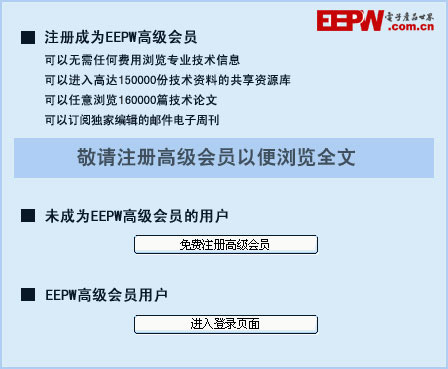FPGA和單片機的串行通信接口設計
摘要:本文針對由FPGA構成的高速數據采集系統數據處理能力弱的問題,提出FPGA與單片機實現數據串行通信的解決方案。在通信過程中完全遵守RS232協議,具有較強的通用性和推廣價值。
本文引用地址:http://www.j9360.com/article/151789.htm1 前言
現場可編程邏輯器件(FPGA)在高速采集系統中的應用越來越廣,由于FPGA對采集到的數據的處理能力比較差,故需要將其采集到的數據送到其他CPU系統來實現數據的處理功能,這就使FPGA系統與其他CPU系統之間的數據通信提到日程上,得到人們的急切關注。本文介紹利用VHDL語言實現 FPGA與單片機的串口異步通信電路。
整個設計采用模塊化的設計思想,可分為四個模塊:FPGA數據發送模塊,FPGA波特率發生控制模塊,FPGA總體接口模塊以及單片機數據接收模塊。本文著重對FPGA數據發送模塊實現進行說明。
2 FPGA數據發送模塊的設計
根據RS232 異步串行通信來的幀格式,在FPGA發送模塊中采用的每一幀格式為:1位開始位+8位數據位+1位奇校驗位+1位停止位,波特率為2400。本系統設計的是將一個16位的數據封裝成高位幀和低位幀兩個幀進行發送,先發送低位幀,再發送高位幀,在傳輸數據時,加上文件頭和數據長度,文件頭用555555來表示,只有單片機收到555555時,才將下面傳輸的數據長度和數據位進行接收,并進行奇校驗位的檢驗,正確就對收到的數據進行存儲處理功能,數據長度可以根據需要任意改變。由設置的波特率可以算出分頻系數,具體算法為分頻系數X=CLK/(BOUND*2)。可由此式算出所需的任意波特率。下面是實現上述功能的VHDL源程序。
Library ieee;
use ieee.std_logic_1164.all;
use ieee.std_logic_arith.all;
use ieee.std_logic_unsigned.all;
entity atel2_bin is
port( txclk: in std_logic; --2400Hz的波特率時鐘
reset: in std_logic; --復位信號
din: in std_logic_vector(15 downto 0); --發送的數據
start: in std_logic; --允許傳輸信號
sout: out std_logic --串行輸出端口
);
end atel2_bin;
architecture behav of atel2_bin is
signal thr,len: std_logic_vector(15 downto 0);
signal txcnt_r: std_logic_vector(2 downto 0);
signal sout1: std_logic;
signal cou: integer:=0;
signal oddb:std_logic;
type s is(start1,start2,shift1,shift2,odd1,odd2,stop1,stop2);
signal state:s:=start1;
begin
process(txclk)
begin
if rising_edge(txclk) then
if cou3 then thr=0000000001010101; --發送的文件頭
elsif cou=3 then
thr=0000000000000010; --發送的文件長度
elsif (cou>3 and state=stop2) then thr=din;--發送的數據
end if;
end if;
end process;
process(reset,txclk)
variable tsr,tsr1,oddb1,oddb2: std_logic_vector(7 downto 0);
begin
if reset='1' then
txcnt_r=(others=>'0');
sout1='1';
state=start1;
cou=0;
elsif txclk'event and txclk='1' then
case state is
when start1=>
if start='1' then
if cou=3 then
len=thr;
end if;
tsr:=thr(7 downto 0);
oddb1:=thr(7 downto 0);
sout1='0'; --起始位
txcnt_r=(others=>'0');
state=shift1;
else
state=start1;
end if;
when shift1=>
oddb=oddb1(7) xor oddb1(6) xor oddb1(5) xor oddb1(4) xor oddb1(3) xor oddb1(2) xor oddb1(1) xor oddb1(0);
sout1=tsr(0); --數據位
tsr(6 downto 0):=tsr(7 downto 1);
tsr(7):='0';
txcnt_r=txcnt_r+1;
if (txcnt_r=7) then
state=odd1;cou=cou+1;
end if;
when odd1=> --奇校驗位
if oddb='1' then
sout1='0';state=stop1;
else
sout1='1';state=stop1;
end if;
when stop1=>
sout1='1'; --停止位
if cou4 then
state=start1;
else
state=start2;
end if;
when start2=>
tsr1:=thr(15 downto 8);
oddb2:=thr(15 downto 8);
sout1='0'; --起始位
txcnt_r=(others=>'0');
state=shift2;
when shift2=>
oddb=oddb2(7) xor oddb2(6) xor oddb2(5) xor oddb2(4) xor oddb2(3) xor oddb2(2) xor oddb2(1) xor oddb2(0);
sout1=tsr1(0);--數據位
tsr1(6 downto 0):=tsr1(7 downto 1);
tsr1(7):='0';
txcnt_r=txcnt_r+1;
if (txcnt_r=7) then
state=odd2;
end if;
when odd2=> --奇校驗位













評論